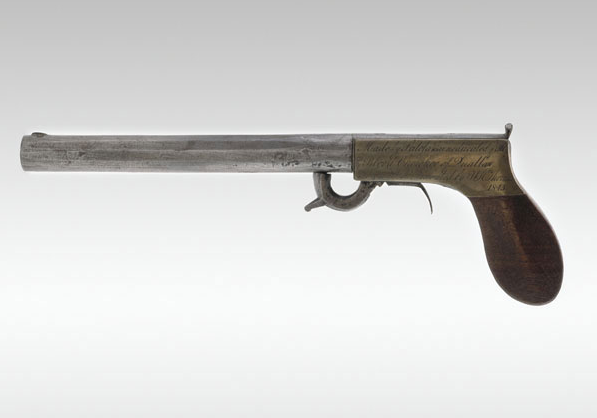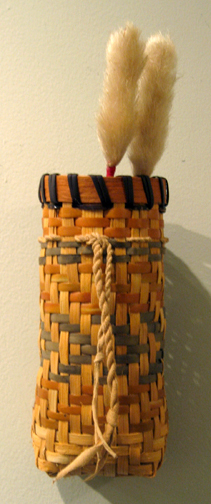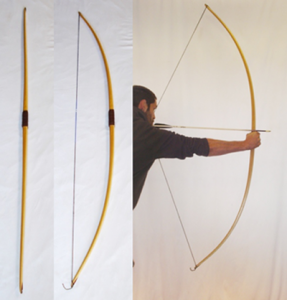Cherokee pistol, 1843
The inscription on this .28-caliber percussion pistol identifies its maker as Salola (Squirrel), a blacksmith in the Oconaluftee settlement of Quallatown, North Carolina, who provided all the settlement’s axes and plows. In addition, he manufactured “a number of very superior rifles and pistols,” as a white visitor who met Salola in 1848 noted. “A specimen of his workmanship . . . may be seen at the Patent Office in Washington, where it was deposited by Mr. Thomas and I believe Salola is the first Indian who ever manufactured an entire gun”.

This pistol was sent to the Patent Office in 1845 by William Holland Thomas. The pistol was held at the Patent Office until the opening of the Smithsonian’s Arts & Industries Building in 1883. It now resides in the National Museum of American History at the Smithsonian.
| Blowgun As early as 1754 Lieutenant Henry Timberlake wrote about Cherokee children using blowguns. The Cherokee used blowguns primarily for hunting small game, and could accurately hit their targets even at great distances. There is no ethnographic or archaeological evidence supporting the use of poisons on their blowgun darts. The blowguns were called “tu-gwe-sdi” and crafted from river cane. The darts were made of materials like locust wood and called “tsi tsi” which means thistle, because this is what was feathered on the back of the dart to catch the force of the breath. The Eastern Band of Cherokee in North Carolina have made blowguns as long as ten feet. Among Southeastern tribes, the Cherokee have the most information about blowguns and the longest recorded use, but the exact origin of the blowgun in the Southeast remains uncertain. Archaeologists have not yet found evidence of blowguns, and ethnographers like James Mooney began recording information only in the late 1800s. Some Cherokee blowgun makers claim that their ancestors drilled out blowguns with flint-tipped drills or even used hot coals to burn out the joints before the introduction of metal from European settlers.  |
 |
Atlatl
Bow
The typical Cherokee bow is a black locust or osage, 55-70″ long, about 1″ to 1 3/8″ wide Eastern Woodlands-style flat-bellied D-bow that bends slightly through the handle. Usually diamond nocks on both ends. The limbs don’t taper in width much throughout their length, usually winding up nearly 3/4″ wide or so at the nocks.

